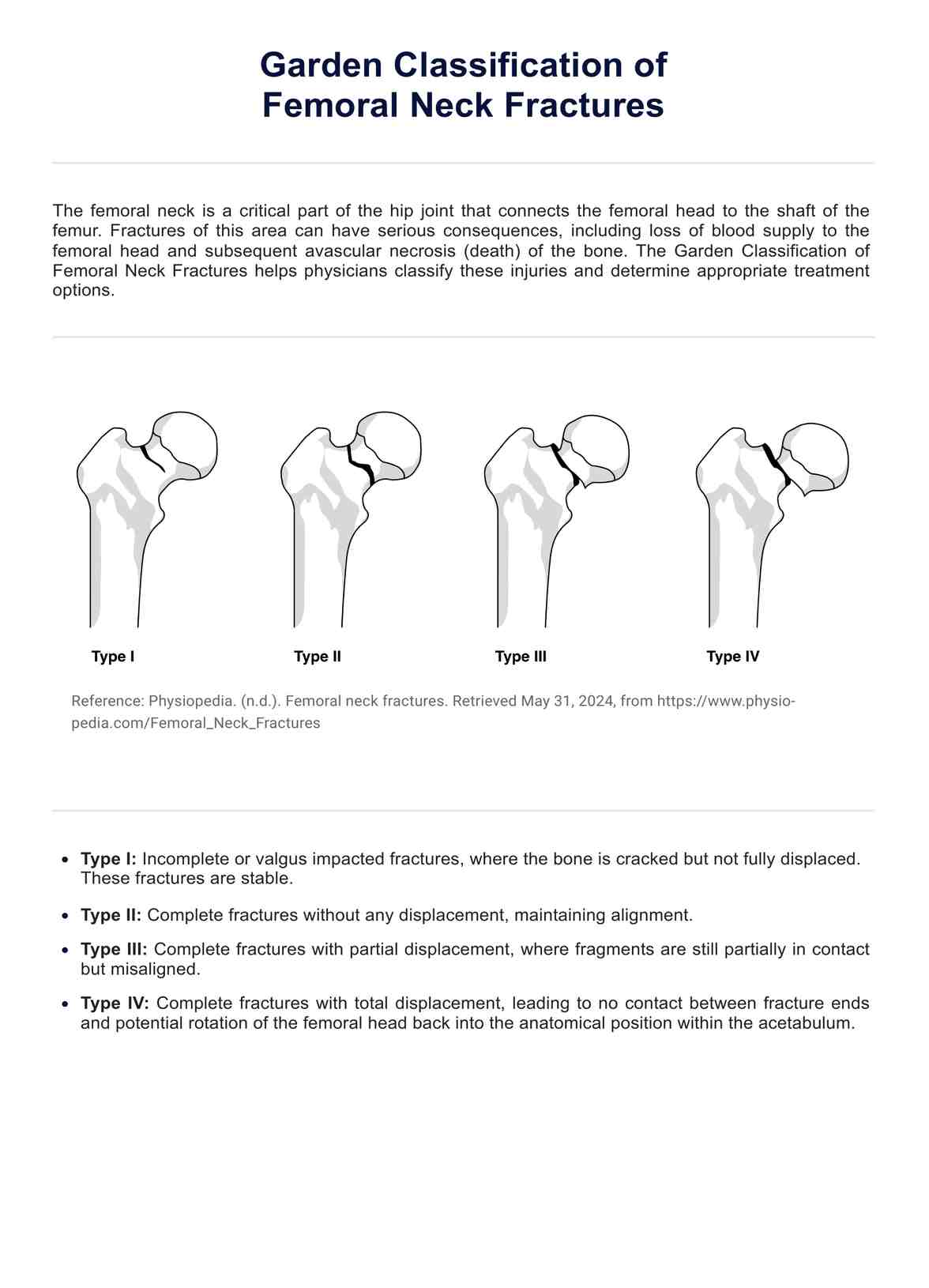The Garden Classification helps determine the severity of a femoral neck fracture by categorizing it based on its displacement. Non-displaced fractures (Garden I and II) often receive conservative treatment, while displaced fractures (Garden III and IV) usually require surgical intervention. This system allows tailored treatments that align with each displacement stage's specific needs and risks.

Garden Classification of Femoral Neck Fractures PDF
Explore the Garden Classification for femoral neck fractures: a key guide for diagnosing severity, guiding treatment, and predicting outcomes.
Garden Classification of Femoral Neck Fractures PDF Template
Commonly asked questions
Surgical options for Garden Stage III and IV fractures typically include internal fixation, where screws or plates are used to stabilize the fracture, or hip replacement in cases where the damage is too severe for fixation alone. The choice of surgery depends on the patient’s overall health, bone density and quality, and the exact nature of the fracture.
The Garden Classification is crucial for predicting complications such as avascular necrosis (AVN), particularly in more severely displaced fractures (Stages III and IV). These stages are associated with higher risks of blood supply interruption to the femoral head, which can lead to AVN. Early and accurate classification allows swift and appropriate management to mitigate these risks.
EHR and practice management software
Get started for free
*No credit card required
Free
$0/usd
Unlimited clients
Telehealth
1GB of storage
Client portal text
Automated billing and online payments











